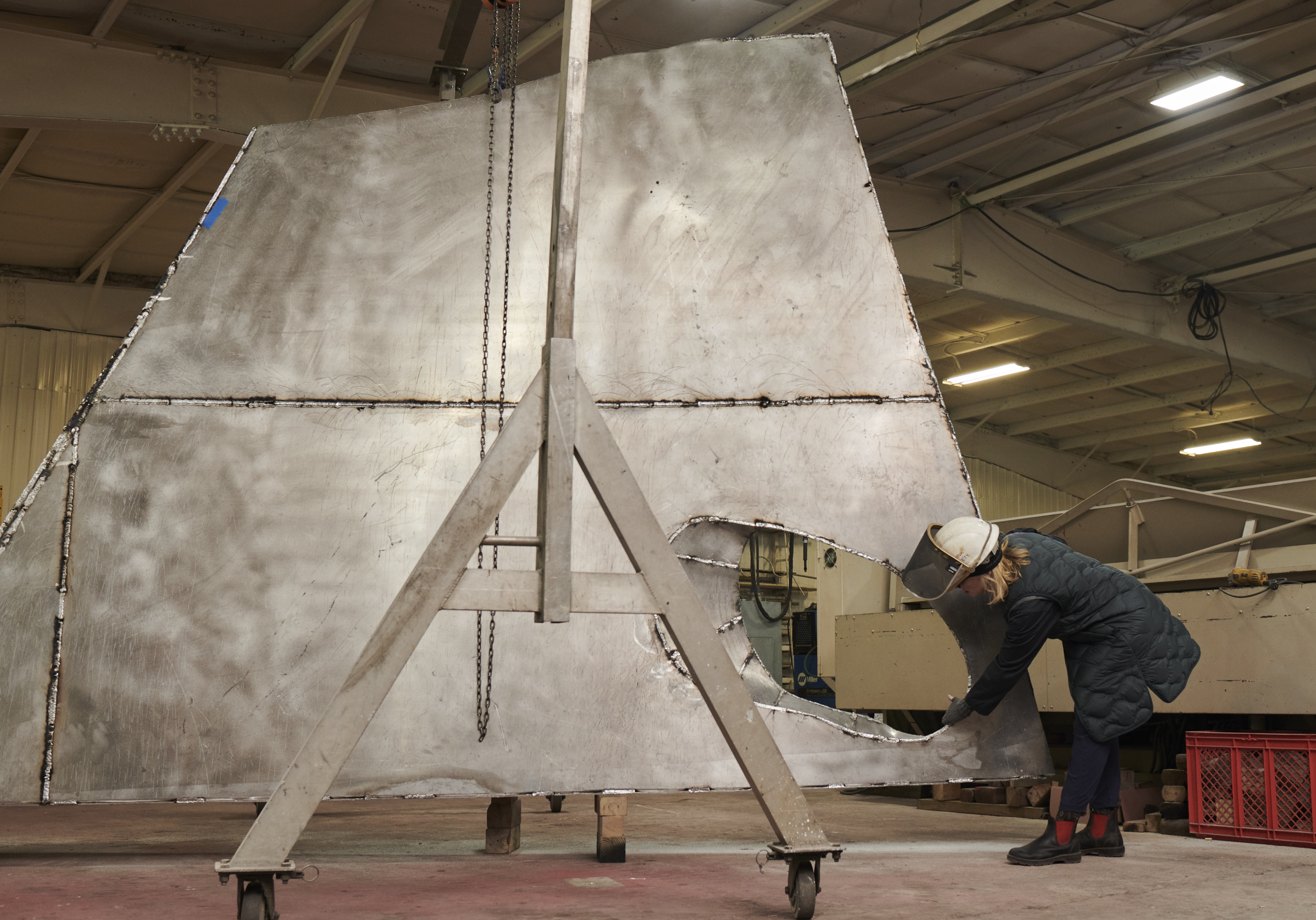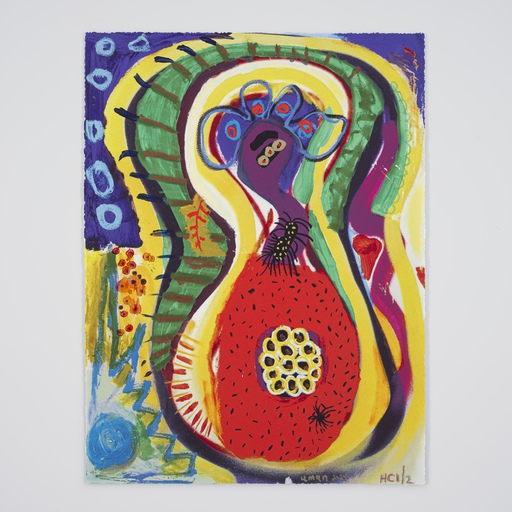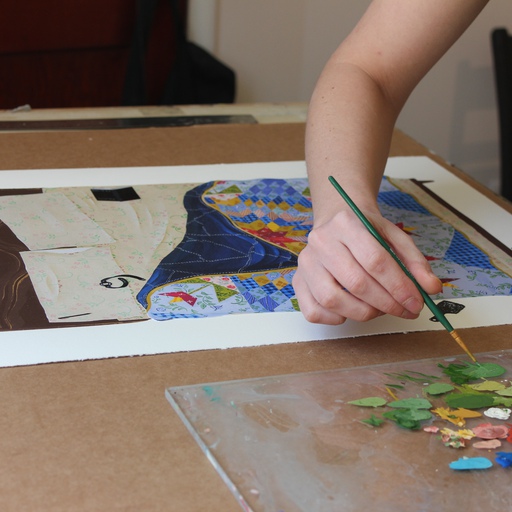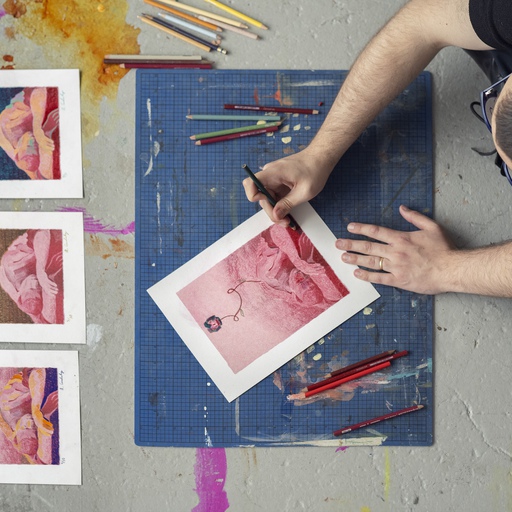Arlene Shechet has not one, but two studios in upstate New York. There’s her space in Kingston, 91 miles north of Manhattan, where she works in wood and steel, and another property, just a couple of miles further north, in Woodstock, where she creates her work with clay.
The Woodstock address is around the corner from where the late, great 20th century painter Philip Guston had his studio. This proximity pleases Shechet . “I feel like he’s my godfather,” the American sculptor told Bomb magazine in 2010. “I think about him all the time. It’s so interesting to read his writings and see what happened, how passionate people were about what a traitor he was, and how difficult it was for him to go from abstraction to representation when, as artists, I think we all know there’s no difference at all. It all morphs, one thing into another.”
Plenty of gallery goers will know about Guston’s changing styles of fortunes – how, in the 1950s the painter found fame among the first cohort of Abstract Expressionists, before returning to figuration a decade or so later, much to the disgust of his earlier supporters.
Shechet’s own tale has been, until more recently, a little less well-known, and certainly, in terms of style and materials, more varied. The artist, who was born in New York City in 1951, only began working with clay in 2007 and is now regarded as one of the foremost ceramic sculptors in contemporary American art, creating large, curving vividly colored pieces, often featuring wooden and metallic elements. However, her practice doesn’t begin and end with the kiln and the potter’s bench. In the past she has sketched, sculpted ice, cast iron and worked with woodblocks, glass, resin and paper pulp, among many other materials.

Arlene Shechet in the fabrication shop with a new outdoor commission for Storm King Art Center. Photo by David Schulze courtesy of Storm King Art Center
Her current exhibition, Girl Group, at the Storm King Art Center in Mountainville, New York, brings together some of her more familiar, indoor ceramics pieces with a set of six new outdoor commissions fashioned from steel and aluminum, each incorporating two colors shifting from glossy to matte, as well as planes of unpainted metal.
The works, like earlier pieces by Shechet, might bring to mind, Lynda Benglis, Carol Bove or Frank Stella; the bold gestures and pigmentation also recalls some of mid-century America’s great abstract artists; yet there’s also a liveliness and inventiveness that’s entirely the artist’s own.
Shechet remembers being a child in 1950s NYC and telling her parents she wanted “to be a farmer or a factory worker.”
“Growing up in New York you sort of see everything finished, you don’t see anything being made,” she explained to Art 21. “So, I wanted to know where everything came from.”
This creative urge led her to take a BA at New York University and earn an MFA from Rhode Island School of Design. Returning to New York after graduation, Shechet commuted to RISD for a while maintaining a teaching position there, before switching to the Parsons School of Design, while simultaneously raising a family and establishing her own artistic practice.
She found solidarity and support from fellow artists such as Laurie Simmons, who had children around the same time as Shechet, and Kiki Smith, who was the first person to ever buy one of Shechet’s works.

Arlene Shechet in the fabrication shop with a new outdoor commission for Storm King Art Center. Photo by David Schulze courtesy of Storm King Art Center
During the 1990s the sculptor began to gain a reputation for creating, figurative, Buddha-style plaster sculptures (Shechet has a deep and sustained interest in Buddhism); however, she never let this recognisable form calcify into a signature style, which, as she admits, made success within the gallery system a little more difficult.
“Everybody wants to be able to tell a quick story, but I do not want to make something that fits into a few sentences. I don’t want it to have a punchline,” she told the New York Times in 2020. “That makes the work harder to sell in the commercial world.”
Nevertheless, many within the art world have grown to love Shechet’s varied sculptures, with their wide range of materials, and alluring liveliness. Avoiding the impulse to sketch or plan, she prefers to imbue each work with the energy of its creation.
“It goes back to the Buddhist way of being in the studio, which means being alert and alive,” she told The Brooklyn Rail in 2015. “I just don’t fall into a place where I’m so comfortable that I start making what I already know too well. So, switching materials is actually a strategy for promoting aliveness in the studio. Keeping my hands off of different materials is more of a struggle than trying things out. So, switching from one material to the next seems very natural to me. Materials and methods are completely interrelated and glide into one another.”

Arlene Shechet in the fabrication shop with a new outdoor commission for Storm King Art Center. Photo by David Schulze courtesy of Storm King Art Center
Today, her works are held in the permanent collections of The Centre Pompidou in Paris; California’s Hammer Museum; the Institute of Contemporary art in Boston; Los Angeles County Museum of Art; and both the Whitney and the Metropolitan Museum of Art in New York, among many other institutions. She is the recipient of a Guggenheim Fellowship, is a lifetime member of the American Academy of Arts and Letters and is represented by Pace and Vielmetter Los Angeles.
However, this high level of success isn’t the artist’s main motivating factor. Instead, an undying creative spark draws this septuagenarian artist back into the studio.
“There’s a lot of faith and trust involved. It’s like a religious experience,” she told the New York Times recently. “Faith and trust are essential to the making of work. You believe somehow that things will be productive, but you don’t necessarily see or experience productivity on a daily basis. The faith comes from experience. Nobody can teach you faith. You just know — and you also know that there’s a certain amount of failure. I definitely throw out at least a third of what I do. Most of the time, I don’t regret that I made it because I know I had to make that one yucky thing in order to make the other thing.”
Follow Artspace to be the first to hear about an Artspace and Storm King Arlene Shechet edition coming soon.



























